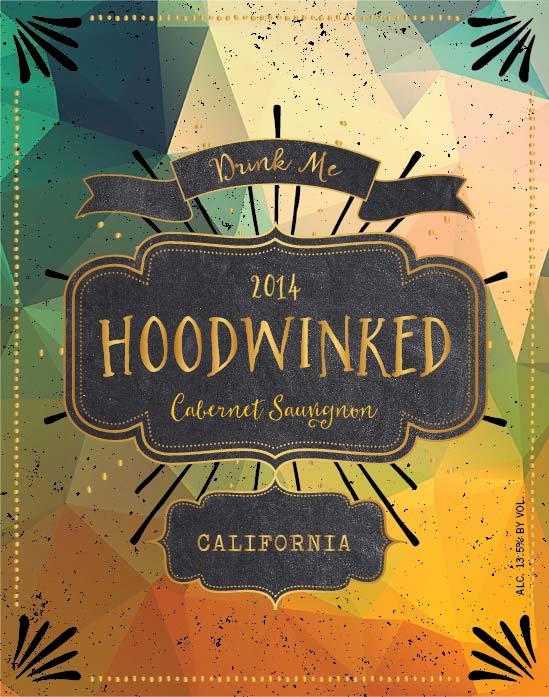 Fetzer Vineyards (“Applicant”) recently sought registration in standard character mark for HOODWINKED on the Principal Register for wine in International Class 33. In re Fetzer Vineyards, Serial No. 86789970 (June 22, 2017) [not precedential]. Originally, the Trademark Examining Attorney refused registration of the mark under Section 2(d) of the Trademark Act based on a likelihood of confusion with the registered standard character mark HOODWINKED for beer in International Class 32. The Applicant appealed and requested reconsideration, the latter of which was denied by the Examining Attorney and thus the appeal resumed. We’ve seen similar cases in the past come before the Board such as, e.g., Duo for wine and Duo for malt beverages. See USPTO Finds a Likelihood of Confusion for Duo for Beer and Duo for Wine. Not surprisingly, the Board affirmed the Examining Attorney’s refusal to register HOODWINKED for wine (very similar to its prior findings with respect to DUO).
Fetzer Vineyards (“Applicant”) recently sought registration in standard character mark for HOODWINKED on the Principal Register for wine in International Class 33. In re Fetzer Vineyards, Serial No. 86789970 (June 22, 2017) [not precedential]. Originally, the Trademark Examining Attorney refused registration of the mark under Section 2(d) of the Trademark Act based on a likelihood of confusion with the registered standard character mark HOODWINKED for beer in International Class 32. The Applicant appealed and requested reconsideration, the latter of which was denied by the Examining Attorney and thus the appeal resumed. We’ve seen similar cases in the past come before the Board such as, e.g., Duo for wine and Duo for malt beverages. See USPTO Finds a Likelihood of Confusion for Duo for Beer and Duo for Wine. Not surprisingly, the Board affirmed the Examining Attorney’s refusal to register HOODWINKED for wine (very similar to its prior findings with respect to DUO).
In any likelihood of confusion analysis, the Board looks to the similarities between the marks and the similarities between the goods. In reviewing the identity of the marks, the Board found the marks to be identical, which weighed heavily in finding a likelihood of confusion. Thus, the degree of similarity between the goods required to support the finding of a likelihood of confusion was reduced.
Next, the Board looked to the similarity of dissimilarity of the nature of the goods. As previously noted, it is not necessary that the goods be similar or competitive in character to support the finding of likelihood of confusion; it is sufficient that the goods are related in some manner and/or that “conditions and activities surrounding marketing of these goods are such that they would or could be encountered by the same persons under circumstances that could, because of the similarity of marks used with them, give rise to the mistaken belief that they originate from or are in some way associated with the same source.” In re Fetzer Vineyards, at 3.
To establish a relationship between Applicant’s wine and Registrant’s beer, the Examining Attorney included printouts from 17 different third-party websites with respect to advertising or offerings that included both beer and wine under the same mark or name, along with 11 third-party, use-based registrations for marks that cover both beer and wine. Applicant attempted to downgrade the Examining Attorney’s evidence by arguing that the evidence contained small, family operations “mostly” only available for on-site consumption through beer pubs and similar. Applicant instead provided evidence from the Corsearch database that was limited to registrations for the marks of the top ten beers sold in America (e.g., Samuel Adams, Guinness, Dos Equis, Stella Artois, Heineken, Corona, etc.). Applicant argued that its search disclosed that, out of all the registrations for top ten beers sold in the U.S., only one also contained a registration for wine (another contained a registration for a beer and wine festival, which applicant argued was not wine per se). See id. at 5–6.
Applicant also provided a printout of a search of breweries from the State of Virginia Tourism website, which Applicant claimed contained only one business that operated as both a brewery and winery.
After reviewing the information, not surprisingly, the Board established there is a relationship between wine and beer. The Board reasoned that it did not necessarily agree with Examining Attorney’s assessment that the evidence provided showed that wine and beer are “closely related,” but instead found there were enough examples of beer and wine offered under the same trademark or trade name that established the goods were related. “Aside from it being common knowledge that they are alcoholic beverages and often consumed with meals, the evidence shows that they are sometimes marketed together in the same trade channels.” Id. at 6–7. The Board looked to the website of Schram Vineyards Winery & Brewery, which it said showed how one entity can cater to both wine and beer lovers by providing both beer and wine at one location. Id. at 7. Further, “[t]he third-party registrations further show that beer and wine may emanate from the same source under a single mark.” Id.
In regard to Applicant’s evidence for the top ten beer producers, the Board said that even if it agreed that the top ten producers did not share trademarks with wine, this alone would not be sufficient by itself to conclude that beer and wine are unrelated generally. Id. Alas, the Board determined that Applicant’s evidence had little provocative value even if it established what Applicant claimed. Thus, the Board determined—in light of the above—there was a likelihood of confusion between Applicant’s mark and Registrant’s mark and thus refused the registration of Applicant’s mark under Section 2(d) of the Trademark Act.
For more information on wine or alcohol law, or trademarks, please contact Lindsey Zahn.
DISCLAIMER: This blog post is for general information purposes only, is not intended to constitute legal advice, and no attorney-client relationship results. Please consult your own attorney for legal advice.